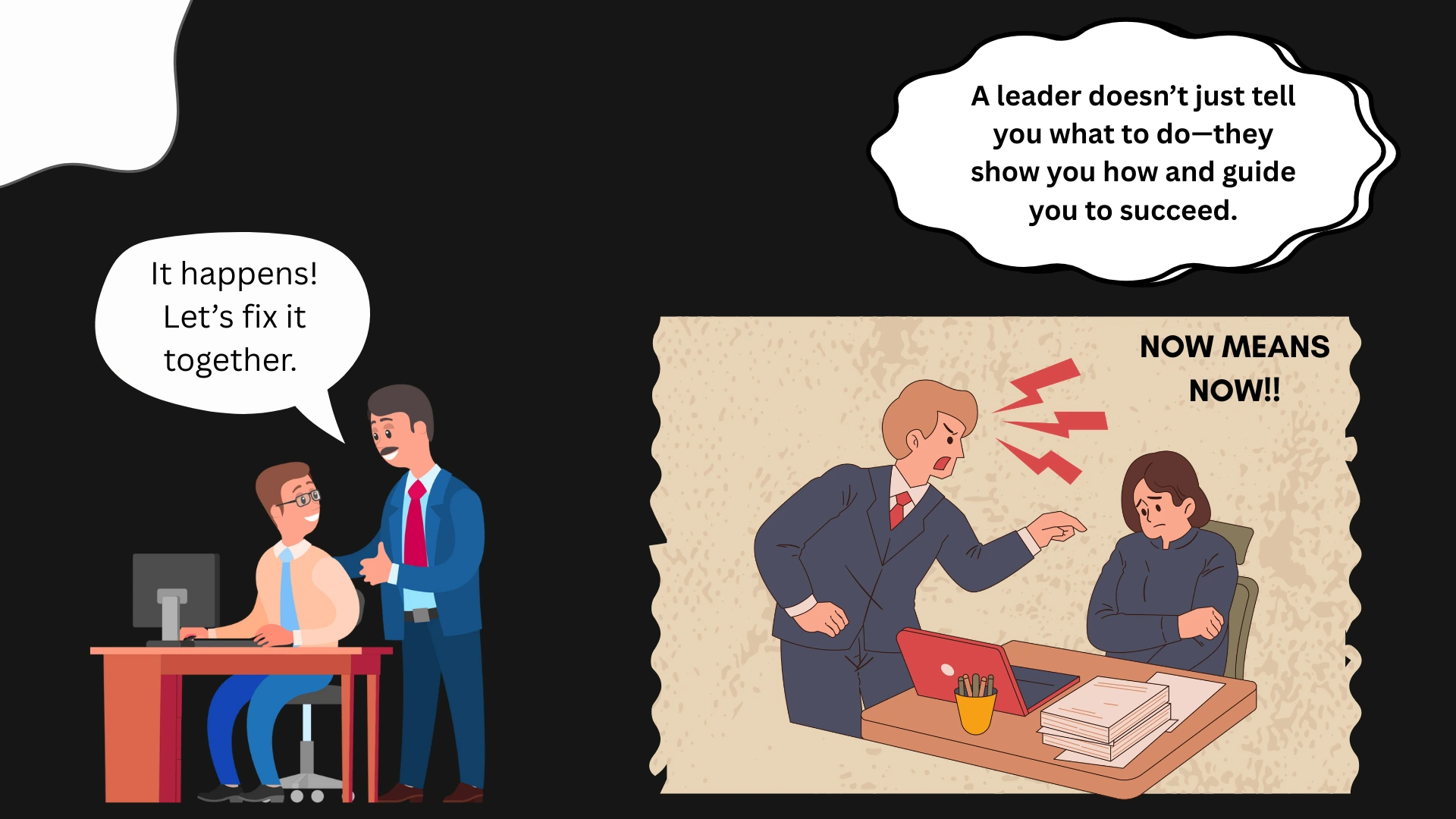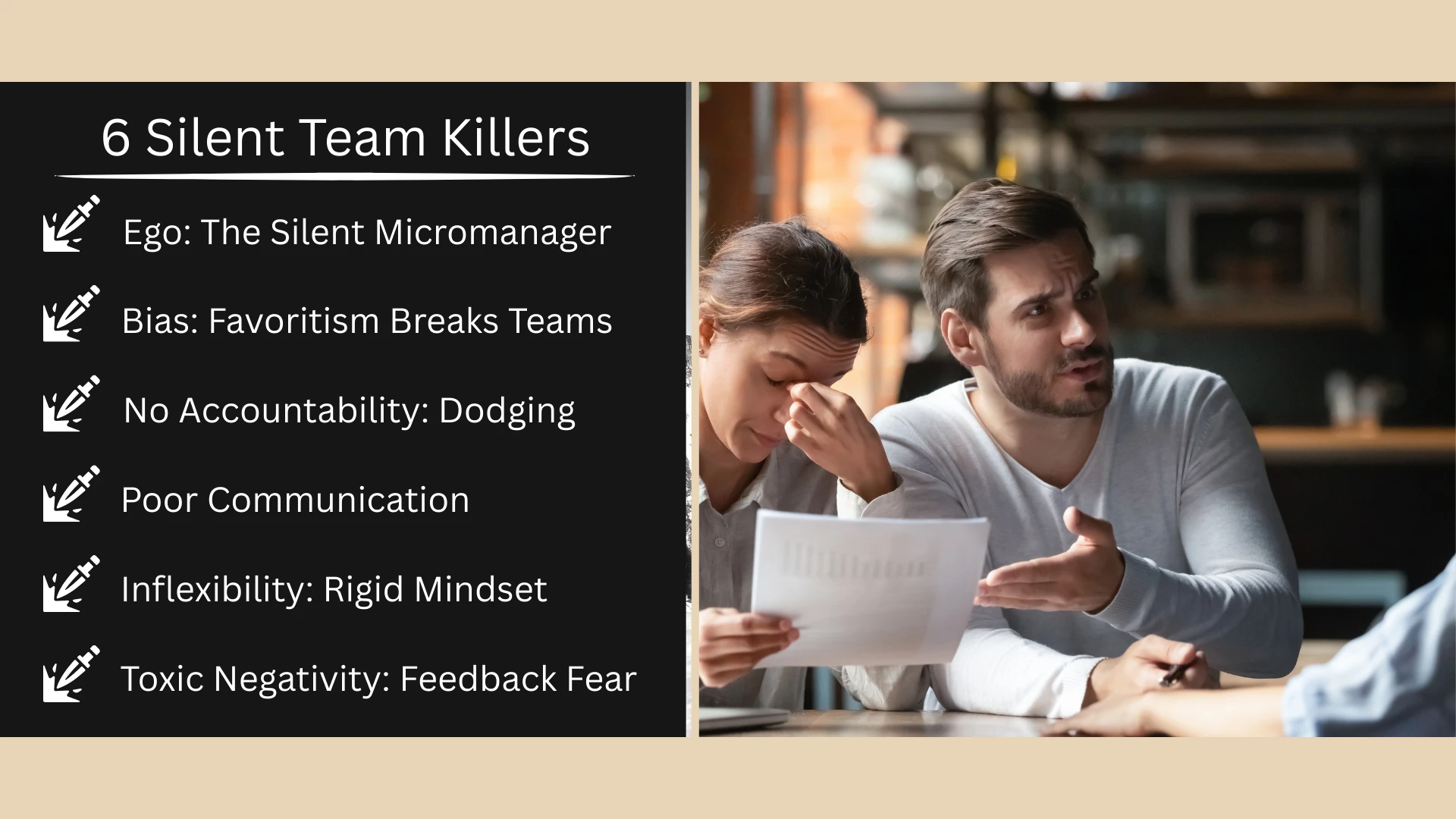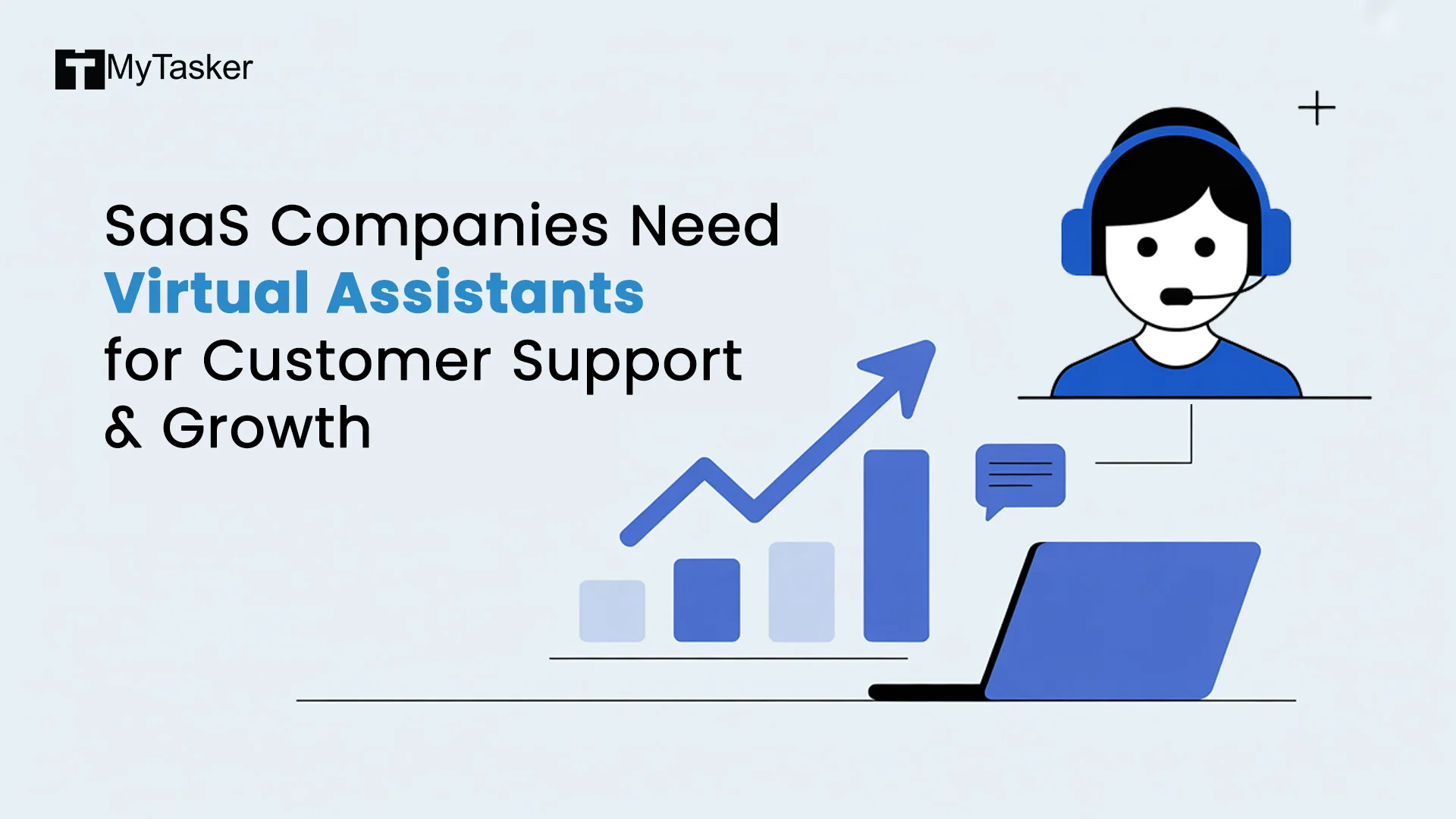Your organizational success needs collaborative effort, better decision-making, and cutting management tools. Whether you're building a team or handling complex projects, this article is for you.
All fundamentals with real-time examples to groom and oversee a group of people and turn them into great team players.
If one wishes to shortlist books on teamwork, it won’t take a long time to fill the rows of bookshelves. But one advice of Ratan Tata, which he gave during an interview that I saw at a tender age is still and will forever be imprinted in my memory and heart.
It’s so inspiring that it echoes in my mind again and again. He beautifully differentiates between a leader and a manager.

Difference Between a Leader and a Manager
A leader is someone who does the most difficult things, tackle the most difficult situations from the front. Whereas, the manager is someone who supervises others. Ask people what they need to do.
You need both to cherish teamwork and get the most out of it.
Indeed, clear instructions and transparency with the short-term and long-term goals are needed. But times come when to keep the team intact, you need to set examples. The leaders themselves need to face the biggest beast.
There is a very beautiful statement of that very gentleman: if you wish to go fast, go alone and if you wish to go far, go together! Gives us the holy grail of teamwork. These two statements, which are nothing but encapsulated wisdom of ages, guided me as the polar star. In 2024, we lost him! But his impact is so great that every Indian mourned for him and felt his going as their personal loss. What a true leader and gentle soul the world met in his personality!

Let me share some inspirational quotes of other greats before I discuss the importance, benefits and some laws of team work.
You might have already heard, read or seen these quotes before. But these quotes will never let you down when it comes to charging up your team.
The words, clear message and other dos and don'ts will help you boost the morale of your team to keep it uplifted and turn a group of skilled professionals into a team. You need to transform your words into action.
Like parenthood, if you wish your child to read books, you read books with them. Be a part of the process and lead from the front during the darkest hours.
Effective Teamwork Mantra
Be the light. If you cannot, reflect it
Sometimes, the leader goes out of form too. This concept helps the leader inspire their team in all situations.
Be the light: When you are in your full swing, inspire your pack and be the guiding light. Leading everyone with positivity.
Reflect the light: If you can’t lead, lift. Support those who are doing good. Amplify their efforts. Encourage and recognize good work. Share kindness and foster mutual respect. Create uplifting spaces for others and be a positive presence.
Edith Wharton said it best:
“There are two ways of spreading light: to be the candle or the mirror that reflects it.”
Both matter. So whether you’re the flame or the mirror, keep the light spreading.

6 traits that drag you away from good teamwork
Ego: The most common trait that often lies undetected is “ego”, which entices you to micromanage. Leadership does require leading from the front, but not always. Thinking you’re always right, you know the most, and everything needs you, slide you to micromange. Believe in the process, count on team collaboration, and pass the baton.
Trust in the team and patience are the antidote to micromanagement.
Bias: Each team has their superstars. Messis and Ronaldos are everywhere but nobody shall be above the game. No matter how hard we want our stars to hit goals. But offside is offside. Your company ethos and culture shall never be tweaked following your personal favorites.
Lack of accountability: Mistakes are part and parcel of any endeavor or pursuit. However, the biggest harm one can do to their team is not owning their mistakes or avoiding the responsibilities at hand. Situations don’t just break teams — a lack of trust does it more. Own your mistakes and deal with them gracefully. Just because you’re a leader, it does not mean you are infallible. Fall, learn, and overcome. Handle each challenge with the same determination.
Poor communication: Watch your thoughts and craft your sentences and speech meticulously. Just because your intent is pure, you cannot be an angry bird! You should be approachable. Listen more! Don’t withhold information.
Inflexibility: Once I was talking to a colleague of mine and he told me a beautiful thing that still resonates with me: Some are inexperienced experts and some are outdated. Refusing to adapt, compromise, or consider others’ ideas blocks progress and stifles innovation. We must also foster unlearning alongside learning.
Negativity – Constant criticism, complaining, or pessimism can bring down team morale and kill motivation. And many times, it is your own fear or insecurity that forces you to unsettle your team.

Importance of Teamwork in Organizations
Why teamwork matters! Well, the reasons are many.
More Productivity – Tasks get done faster when responsibilities are shared among team members.
More Innovation – Collaboration leads to problem-solving and new ideas.
More Trust – Teamwork builds a culture of mutual respect and accountability.
Better Communication – Regular collaboration means clarity, transparency and feedback within teams.
Higher Morale – Working in a supportive team environment increases job satisfaction and motivation.
Skills Development – Team members learn from each other, soft and technical skills.
More Flexibility – Teams can adapt to change faster by pooling resources and adjusting roles.
Stronger Organisational Culture – A collaborative spirit reinforces shared values and goals. It nurtures a sense of unity, which is highlight needed to form effective teams.
Less Burnout – Sharing workloads prevents being overwhelmed and helps with work-life balance.
Better Results – Teams aligned to common goals deliver better outcomes and long-term success.
Benefits of teamwork
1. More Creativity & Innovation
When multiple minds work together, ideas flow faster and better. Different perspectives mean new solutions.
2. More Efficiency
Clear roles and shared responsibilities mean teams work smarter, not harder. Less duplication, more action.
3. More Learning & Skill Sharing
Team members learn from each other’s strengths, gain new skills and improve overall performance.
4. Better Problem Solving Skills
Complex problems become easier when tackled from multiple angles. Two (or more) heads are better than one. Mutual support and strong teamwork are needed to make any team an organizational success.
5. Better Communication
Collaboration means open communication, active listening and constructive feedback – building mutual trust and clarity. Employee engagement becomes more essential with a growing team size.
6. Stronger Relationships
Working closely creates stronger team bonds, higher morale and team loyalty.
7. Aligned Goals & Vision
Collaborative teams stay aligned on what matters most – shared success and common goals.

How to Make a Successful Team (with Mt. Everest Expedition examples)
Every leader hits this moment:
You look around at the team you’ve got and realise they aren’t quite the team you need to reach your vision.
At that moment, you have two choices:
a. Give up your dream, or
b. Grow your team into the dream team.
If you’re still reading, I’ll assume you’ve chosen the second option.
Here’s how you do it:

1. Grow the People You Already Have
The fastest way to grow a great team is to grow the people already on it.
As a leader, your job is to spot potential where others see limitations — and develop it.
Every team member is at a different stage in their growth journey. Tailor your support accordingly:
• The Excited Beginner – Full of energy but lacking direction. They need clear guidance.
• The Struggling Learner – Motivation fades as reality sets in. They need encouragement and coaching.
• The Cautious Doer – They’re capable but hesitant. They need confidence and trust.
• The Independent Achiever – Ready to own outcomes. They need responsibility and space.
Give your people room to rise. Sometimes, the next star performer is already sitting in the room — they just haven’t been given the right challenge yet.
Just like Tenzing Norgay. In 1935, he was a young porter on an expedition led by Eric Shipton. Eighteen years later, he became one of the first two people to stand atop Mount Everest.
2. Add the Right People to Fill the Gaps
Even the best development strategy can’t fill every gap.
There comes a point where you need to add talent.
That doesn’t mean replacing your team — it means reinforcing it. One new hire with the right skill set or mindset can completely change the game.
Think of it as upgrading one key position on a sports team — suddenly, the whole unit clicks.
If the dream is big, you’ll need a strong bench.
3. Adjust the Leadership to Fit the Season
Sometimes it’s not about the players — it’s about who’s calling the shots.
Different challenges require different types of leadership.
If your team is talented but stuck, it might be time to shift leadership roles — even temporarily.
That’s what happened on the legendary Everest climb:
• Colonel John Hunt led the overall expedition.
• Tenzing Norgay took charge of the porters and base camps.
• Climbing duos rotated leadership while navigating dangerous terrain.
Each leader stepped up when the moment demanded it.
Sometimes, the best leader for a situation isn’t the one with the title — it’s the one with the insight.
If your team is plateauing, ask yourself:
Is there someone better suited to lead us through this part of the climb? Is there any scope or possibility that could lead to high performance?
4. Let Go of What’s Holding You Back
This is the hard part. But it’s crucial.
One underperforming or negative team member can slow — or sink — the entire mission. When someone consistently holds the team back through lack of effort, poor attitude or drama, it’s time to act.
On the 1953 Everest expedition, Tenzing had to make that call.
When conflicts broke out between the British climbers and Sherpas, he discovered two individuals were stirring the pot. He sent them home.
Instant peace.
Protect the culture you’re building — even if it means making uncomfortable choices.
The Bigger the Dream, the Stronger the Team Needs to Be
Growing a team isn’t quick or easy. It takes patience, strategy and tough decisions.
But here’s the truth:
As the mountain gets higher, teamwork matters more.
Whether you’re leading a startup, scaling a business or chasing a once-in-a-lifetime goal, you can’t get there alone.
And you won’t get there with the wrong team.
Don’t settle.
Grow them. Build around them. Empower the right leaders. Remove what’s holding you back.
Because the only other option?
It is to give up on the dream.
And we both know you didn’t come this far just to do that.
Great group activities for a better work environment
Strong teams don’t just happen — they’re built. Team building activities are essential for boosting connection, collaboration and performance.
Let’s explore some quick team building activities to make your team members feel an emphasis to be part of the team.
Icebreaker Games
Icebreakers are a quick way to break the silence and build rapport among team members.
Two Truths and a Lie
Each person shares three statements — two true and one false. The team then guesses which one’s the lie. It’s simple, fun and a great way to discover quirky facts about each other.
Example:
-
I once met Elon Musk at an airport.
-
I can juggle three flaming torches.
-
I have never had coffee.
(Which one’s the lie?)

Virtual Escape Rooms
In this activity teams work together to solve puzzles and “escape” a digital room within a time limit. It promotes critical thinking, creative problem solving and solid teamwork. Many themes are available — from haunted houses to space missions.
Team-building activities for a sense of unity
These activities challenge teams to think creatively and make fast, effective decisions together. It's important for their personal growth and coming up with innovative ideas.
Hackathons to check team effectiveness
Hackathons are fast-paced events where teams develop a solution (for existing or new challenges), product or idea around a specific theme.
Example: A 24-hour AI hackathon where teams build a customer support chatbot.
Discussions on Case Studies
Present your entire team with a real-world challenge and let them brainstorm solutions. These discussions develop critical thinking, encourage debate and build decision-making confidence.
Example: “Your company’s website traffic dropped 30% last month. What would you do?”
Collaborative Workshops
Workshops help teams grow through shared learning and hands-on problem-solving. They may involve role-playing, peer-led sessions or guided practice. These workshops build trust and promote personal and team development.
Modern Collaboration Trends
Remote Collaboration
Remote doesn’t mean disconnected. Set clear expectations, use video for nuanced discussions and document everything for visibility and alignment.
Virtual Teamwork
Successful virtual teamwork relies on regular check-ins, async communication when needed, and clearly defined working hours to keep everyone in sync.
Hybrid Collaboration
Hybrid teams thrive when all voices are included. Use hybrid-friendly tools, offer flexible schedules and make sure both remote and in-person team members have equal input in decision-making.
Virtual Assistants (VAs) in Teamwork
VA Task Management
Assign tasks through tools like Trello or Asana. Be clear about deadlines and priorities, and provide detailed instructions to avoid miscommunication.
VA Coordination
Integrate VAs into team workflows from day one. Share calendars, provide access to shared documents and maintain a central knowledge base for reference.
Remote Executive Support
VAs can handle inbox management, calendar scheduling, travel planning and report creation — freeing up your time for strategic work. They possess diverse skills and come from different areas of expertise.
VA Project Collaboration
Virtual assistants can actively participate in projects. Use them for research, data entry, task tracking and department coordination.
Delegating to VAs
Start by assigning repetitive tasks. Offer training and real-time feedback and gradually automate routine handoffs for maximum efficiency.

Software System to manage the team
Cloud-Based Platforms
Google Workspace and Trello to collaborate in real time, manage projects with Kanban boards and ensure easy file access.
Task Automation
Zapier and Microsoft Power Automate simplify repetitive tasks and connect your tools into a seamless workflow.
Virtual Meeting Scheduling
Calendly and Doodle eliminate back-and-forth scheduling. Sync calendars across time zones and set buffer time between calls.
Document Sharing
Dropbox and Notion help you maintain version control, set access permissions and take collaborative notes that get used.
Communication Platforms
Slack or Microsoft Teams centralize communication, integrate essential tools and host quick video chats without friction.
Best Practices for Teamwork
Clear Delegation
Define responsibilities clearly, set SMART goals and show examples of successful outcomes to guide expectations.
Effective Communication
Use video when tone matters. Always follow up discussions with written summaries, and don’t be afraid to over-communicate important details.
Time Zone Management
World Time Buddy helps schedule fairly across time zones. Rotate meeting times and record sessions for team members in different regions.
Collaborative Workflows
Document standard operating procedures, build regular feedback loops and use Agile or Scrum methods to stay aligned.
Performance Tracking
Set measurable KPIs, track time with Toggl or Time Doctor and hold regular check-ins to review progress and performance.
What makes a good team player
To be a good team member, focus on clear communication, reliability and a positive attitude. Be open to collaboration, feedback and different perspectives, and always put the team’s success above personal ego. Be flexible, take initiative when needed and support others through challenges. Respect differences, remain accountable for your actions and continuously seek opportunities to learn and grow. Whether leading or following, contribute with humility, enthusiasm and a genuine commitment to the team’s shared goals.
How to be a better team leader
To be a better team leader, lead with empathy, clarity and vision. Communicate openly and listen actively to understand your team’s needs and challenges. Set clear goals, delegate effectively and trust your team to deliver while offering support and guidance. Be decisive yet approachable, consistent in your actions and lead by example — especially during tough times. Encourage collaboration, recognize contributions and create an environment where people feel valued, motivated and safe to grow. Most importantly, keep learning, stay humble and adapt your leadership style to fit the evolving dynamics of your team.
How to become a better project manager
To become a better project manager, you don't need a cape. What you need is clarity, consistency and open communication. And that's exactly what you can give your team—and yourself—by asking the right questions, building trust and keeping everyone moving toward results.
Plan Like a Pro: That's where the real work begins. And it starts with planning. Big goals break down into smaller ones. Timelines get set. Tasks are assigned clearly. When you plan well, surprises are few and far between.
Communicate Constantly: Communication is the next step. Keeping your team in the loop with clear updates and expectations prevents confusion and builds trust. That's where you want to be.
Encourage Collaboration: Collaboration is where the real magic happens. Delegating tasks is just the start. You want to create space for ideas, ownership and teamwork. That's where your team will surprise you with their ideas and solutions.
Track Without Micromanaging: Tracking progress doesn't have to mean micromanaging. Tools like Trello or Asana can keep things transparent without controlling every move. You want to know what's happening, not dictate it.
Stay Proactive: You're proactive when you expect roadblocks. Prepare backup plans. Stay flexible and solution-focused. That's where you turn obstacles into opportunities.
Keep Learning: Learning is a continuous process. Stay sharp with project management courses, books or Agile/Scrum frameworks. A growth mindset leads to better outcomes. And that's exactly what you want.
Lead with Empathy: The best project managers lead with empathy. They support their team—especially when the pressure's on. Emotional intelligence turns a good project manager into a great one.
Polish communication skills. Set and say "yes" to realistic deadlines while acquiring client projects. Be adept at handling project management platforms and conflict resolutions. And always foster group work over siding with individual team members.
Future of Great Teamwork
AI-powered collaboration assistants will simplify task management, automate routine work and enhance decision-making with real-time data.
VR-based team meetings will create more immersive and engaging virtual collaboration spaces, bridging the gap between remote and in-person interactions.
Flexibility and well-being will redefine work culture — teams will prioritize balance, mental health and personalized work schedules.
We work as your extended workforce or as part of a team, following shared purpose, team goals, and company culture. Our team of VAs who come from diverse backgrounds assist you with hiring a new team, data and resource management, customer service, human resources, social media, website creation and overall admin work.



.jpg)











